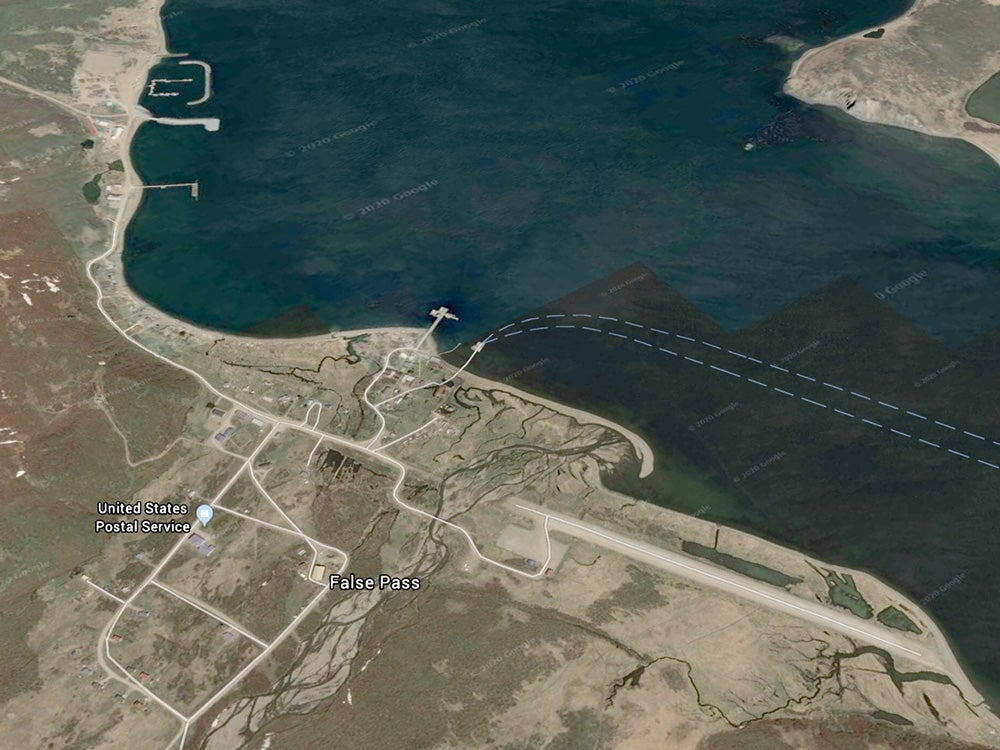False Pass Airport Improvement Project

One of the community’s greatest needs is to have a reconstructed airport with a longer runway. The city has a substandard gravel runway measuring 2,150 feet long by 60 feet wide, with a runway safety area of 2,630’ by 120.’ However, only 2000′ feet of the runway are usable because Roundtop Valley Creek is running through it. The rest of the runway is used as a road.
The runway is located at the mouth of a narrow valley, with terrain tight against the approach path on both ends. During spring break-up, melting ice/snow and heavy rains cause the runway to become soft, which reduces aircraft performance as well as safety. The runway only has stationary approach lights on each end of the runway and does not have an adequate lighting system. Navigational aids are substandard and in disrepair. A portion of the apron is located too close to the runway, reducing safety standards. The airport does not meet FAA or Alaska Aviation System Plan standards, both of which require a minimum runway length of 3,300 feet. Rebuilding the False Pass Airport with a longer runway would substantially increase safety for pilots and passengers.
The city’s substandard runway creates major problems when patients need to be transported to a hospital due to medical emergencies. As a result, the community lacks access to a dependable level of higher care. Air ambulance companies, such as Guardian Flight and LifeMed Alaska (both operate King Air 200s), are unable to serve False Pass because the companies require a minimum runway length of 3,000 feet in order to land in a community. The city has a small health clinic, however, during medical emergencies, patients needing a higher level of care must travel to hospitals in Anchorage, 646 miles away, via Cold Bay, the hub airport in the Aleutians and the south Alaska Peninsula.
The False Pass Airport is an essential transportation facility in False Pass. The community has no road access and very limited ferry service. Correcting the airport’s deficiencies would result in one that meets FAA and Alaska DOT&PF standards. Further, it would accommodate anticipated aircraft operations for the next 20 years, and would provide dependable transportation of goods and people in and out of the community. The City of False Pass and the Aleutians East Borough have expressed strong support for a reconstructed airport with a longer runway.